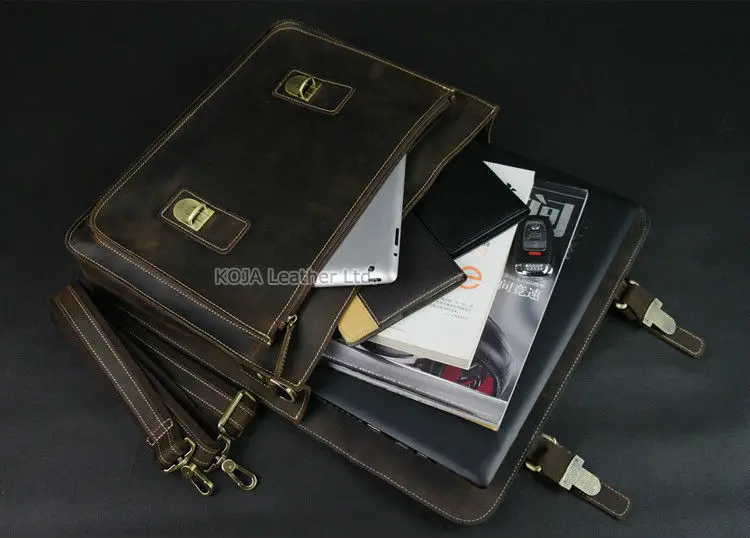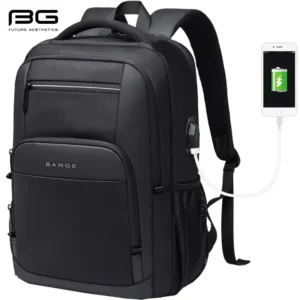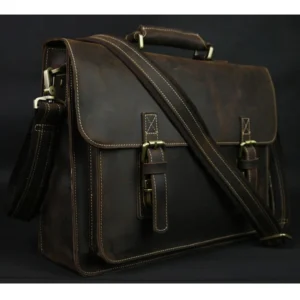Understanding Leather Terminology: 100% Leather vs Full Grain Leather
No, 100% leather is not the same as full grain leather. While these terms might seem interchangeable to casual shoppers, they actually represent very different aspects of leather products.
Definition Box:
– 100% Leather: Indicates that a product is made entirely of real leather (not synthetic materials), but doesn’t specify quality grade
– Full Grain Leather: Refers specifically to the highest quality grade of leather, taken from the top layer of the hide with natural grain intact
When shopping for leather goods, understanding these distinctions can mean the difference between investing in a product that improves with age versus one that deteriorates quickly. Many consumers experience confusion when comparing similarly priced products with different leather terminology on their labels.
The difference matters significantly for your purchasing decisions—especially for items where durability and appearance are important considerations. In the sections that follow, we’ll explore exactly what each term means, how they differ, and how to identify true quality in leather products.
The relationship between these terms is hierarchical: full grain leather is always 100% leather, but 100% leather isn’t necessarily full grain. Understanding the full grain vs top grain leather distinction and knowing the four grades of leather will help you make better purchasing decisions. For the highest quality, many enthusiasts specifically seek out full-grain leather backpacks for their superior characteristics.
What Does “100% Leather” Actually Mean?
The term “100% leather” simply indicates that a product is made entirely from real animal hide rather than synthetic alternatives like vinyl or “pleather” (plastic leather). It’s a statement about material authenticity, not quality.
This label functions as an umbrella term that can include various grades of leather, from the highest quality to the lowest. Here’s what this term tells you—and importantly, what it doesn’t:
What “100% leather” confirms:
– The product contains real leather derived from animal hide
– No synthetic leather materials are used in the main construction
– The item is not made from a leather/synthetic blend
What “100% leather” doesn’t tell you:
– Which specific grade of leather is used
– Which part of the hide the leather comes from
– How much processing the leather has undergone
– The expected durability or quality of the material
– How the leather will wear, age, or develop over time
Many manufacturers use “100% leather” as a marketing term because it sounds premium while allowing them flexibility in sourcing less expensive leather grades. A product labeled only as “100% leather” could be made from lower-quality split leather or even bonded leather (reconstituted leather scraps), yet still technically qualify for this description.
When choosing leather quality bags, understanding that “100% leather” is just the starting point for leather authentication rather than a quality indicator will help you make better purchasing decisions. You’ll find varying leather quality levels among our leather backpack collection, demonstrating the range that can exist within this category.
Full Grain Leather: The Premium Grade Explained
Full grain leather represents the highest quality grade available and is distinguished by specific characteristics that set it apart from all other leather types.
This premium material is harvested from the outermost layer of the animal hide—the portion directly beneath the hair. What makes full grain leather special is that it remains intact and unaltered, preserving the natural surface texture and grain pattern of the animal’s skin.
Key Characteristics of Full Grain Leather:
– Contains the entire natural grain with no sanding or buffing
– Features visible natural markings, scars, and variations that tell a story
– Possesses the highest fiber strength due to its unaltered density
– Demonstrates superior breathability and moisture-wicking properties
– Develops a rich patina over time that enhances its beauty
– Requires minimal chemical processing compared to other leather types
The manufacturing process for full grain leather focuses on preserving rather than altering the hide’s natural characteristics. Tanners carefully clean and treat the leather without removing its natural surface, allowing the distinctive grain pattern and markings to remain visible. These features, once considered imperfections, are now recognized as hallmarks of authentic, high-quality leather.
Full grain leather requires skilled craftsmanship to work with because its natural variations make it more challenging to cut and stitch consistently. The result, however, is a product with unmatched durability, character, and aging potential.
Understanding the art of patina in full-grain leather helps appreciate why many enthusiasts specifically seek out luxury leather backpacks made from this premium material. The natural characteristics of full grain leather create a living material that develops unique character with each use.
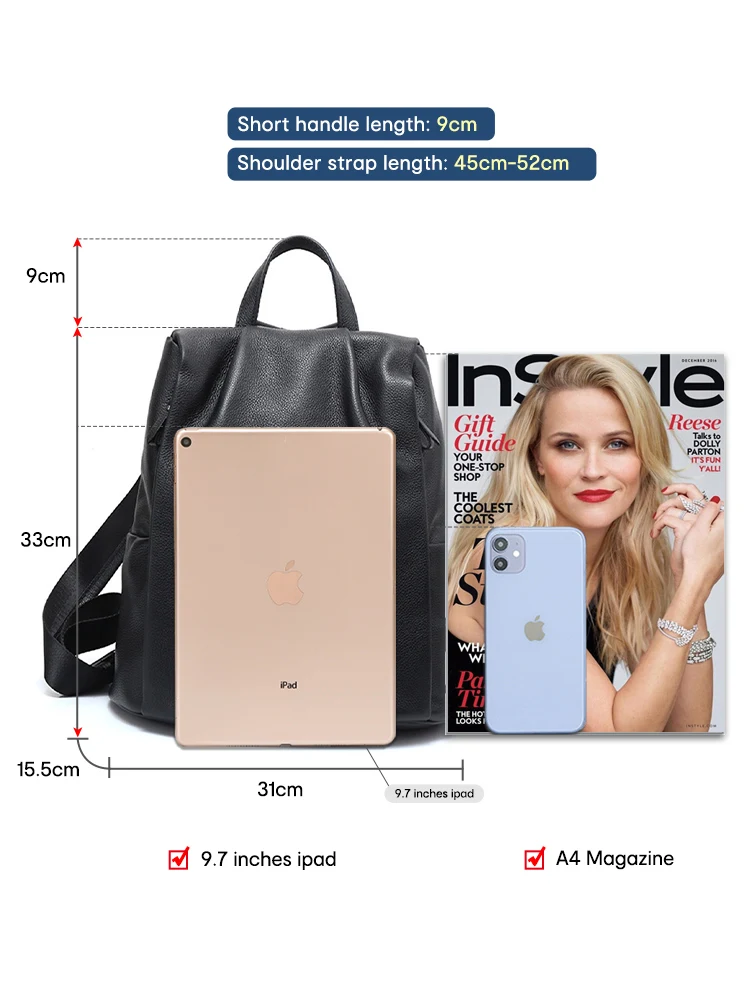
Side-by-Side Comparison: 100% Leather vs. Full Grain Leather
To truly understand the difference between these terms, let’s compare them across several important factors:
| Characteristic | 100% Leather | Full Grain Leather |
|---|---|---|
| Definition | Made entirely from real leather (any grade) | Highest quality leather from the top layer with natural grain intact |
| Material Origin | Any part of the animal hide | Only the top layer of the hide beneath the hair |
| Processing Level | Can be heavily processed | Minimal processing, natural surface preserved |
| Surface Appearance | Varies widely; may be uniform or artificial | Natural grain pattern with visible markings and character |
| Durability | Varies greatly depending on specific grade | Exceptionally durable; can last decades with proper care |
| Aging Characteristics | Lower grades may deteriorate; higher grades improve | Develops rich patina and character over time |
| Breathability | Varies by grade and treatment | Highly breathable due to natural pore structure |
| Price Point | Wide range ($-$$$$) | Premium ($$$-$$$$) |
| Typical Lifespan | 2-20+ years depending on grade | 20+ years with proper care |
Full grain leather stands as a specific, premium category within the broader “100% leather” designation. The key difference lies in quality rather than authenticity—both are real leather, but full grain represents the pinnacle of leather quality.
The price difference between general “100% leather” products and those specifically labeled as “full grain” often reflects this quality gap. For example, a full grain leather backpack might cost 2-3 times more than a “genuine leather” backpack (a lower grade still qualifying as “100% leather”), but could last 3-5 times longer with proper care.
When evaluating products, consider that full grain leather offers substantial long-term value despite its higher initial cost. Its exceptional durability means it’s often more economical over time, especially for items like backpacks that face daily wear and tear. Research shows full grain leather is better for backpacks due to its durability and aging characteristics, as evident in our vintage leather backpack collection.
Other Leather Grades Under the “100% Leather” Umbrella
The “100% leather” designation encompasses multiple grades of leather, each with distinct characteristics. Understanding the complete hierarchy helps put full grain leather in proper context:
Top Grain Leather
– The second-highest quality grade
– Created by sanding or buffing away the outermost layer of the hide
– Smoother, more uniform appearance than full grain
– Good durability, though not as strong as full grain
– More pliable and easier to work with
– Develops some patina, though less distinctive than full grain
– Common in high-end furniture, bags, and shoes
Split Grain Leather
– Created from the lower layers of the hide after top layers are removed
– Less durable than top or full grain
– Often embossed with an artificial grain pattern
– May be coated with polyurethane for uniformity
– Typically used for suede when the flesh side is exposed
– Found in more affordable leather goods and clothing
Genuine Leather
– Despite the name, typically represents lower-quality leather
– Made from layers below the split layer
– Often heavily processed and may include multiple pieces
– Limited durability compared to higher grades
– May have artificial textures or heavy finishing coats
– Common in mass-produced wallets, belts, and fashion accessories
Bonded Leather
– The lowest quality that can still be called leather
– Made from leather scraps and shavings mixed with binding agents
– Pressed into sheets and embossed with artificial grain
– Contains as little as 10-20% actual leather content
– Significantly less durable; often peels or cracks within 1-3 years
– Used in very inexpensive “leather” furniture and accessories
Each of these grades can technically be labeled “100% leather” (though bonded leather should ideally be specified as such), which demonstrates why this term alone isn’t a reliable quality indicator.
For a deeper understanding of the difference between the top two categories, our guide on full grain vs top grain leather provides detailed comparisons. When seeking durability in bags specifically, learning about leather types for durable bags can help you make informed decisions.
How to Identify Full Grain Leather (And Avoid Misleading Labels)
With varying leather qualities and sometimes misleading terminology in the market, knowing how to identify genuine full grain leather becomes an essential skill:
Visual Inspection Techniques:
– Look for natural variations and imperfections in the surface
– Check for visible pores and follicle patterns in the leather
– Examine the edges—full grain leather shows fibrous structure rather than uniform or layered appearance
– Natural color variations should be present rather than perfectly uniform coloration
– The surface should have a subtle natural texture, not a perfectly smooth or artificially embossed pattern
Tactile Assessment Methods:
– Feel the weight—full grain leather is generally heavier than lower grades
– Test the flexibility—it should feel supple yet substantial
– Note the temperature response—quality leather quickly warms to your touch
– Sense the texture—slightly irregular rather than perfectly smooth
– Press your fingernail lightly into an inconspicuous area—it should leave a slight impression that quickly disappears
Other Identification Methods:
– Smell the leather—full grain has a rich, natural scent without strong chemical odors
– Consider the price—if it seems too good to be true for full grain, it likely is
– Analyze the product description for specific details about leather source and tanning
Misleading Terms to Be Cautious About:
– “Genuine leather” (despite sounding premium, often indicates lower quality)
– “Real leather” (states authenticity but not quality)
– “Corrected grain” (indicates surface alterations)
– “Man-made leather” (not leather at all)
– Vague terms like “premium leather” without specific grade information
When shopping, don’t hesitate to ask retailers specific questions about the leather grade, tanning process, and origin. Reputable sellers of true full grain leather will gladly provide these details.
Understanding leather backpack styles helps identify quality across different designs. Our collection of men’s leather backpacks demonstrates the visual and tactile qualities of different leather grades.
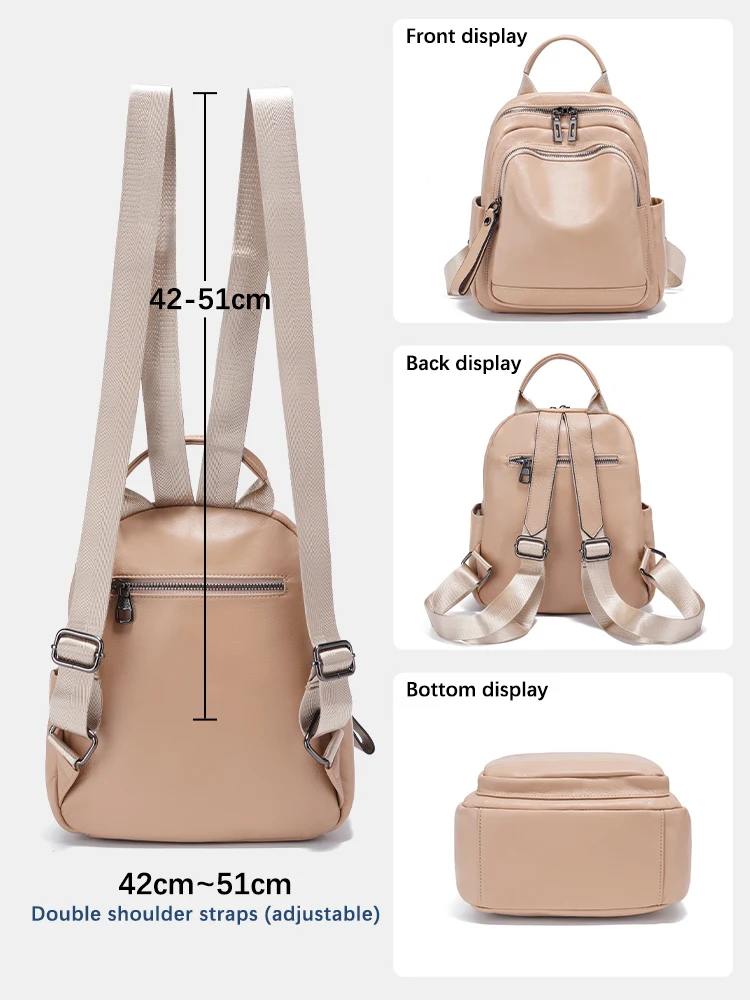
Caring for Different Leather Qualities: Maintenance Implications
The grade of leather significantly impacts maintenance requirements and how your product will age over time:
Full Grain Leather Care:
– Requires minimal but consistent maintenance
– Clean with a damp cloth and mild soap when needed
– Condition with quality leather conditioner 2-4 times per year
– Develops desirable patina with use and exposure to natural oils
– Scratches can often be buffed out or blend into the developing character
– Avoid excessive water exposure, though it handles occasional moisture better than lower grades
Lower-Grade Leather Care:
– May require more frequent conditioning to prevent drying and cracking
– Often needs special products designed for treated leathers
– Surface coatings may wear unevenly, requiring more interventions
– Scratches typically remain visible and don’t integrate into a natural patina
– More vulnerable to water damage and environmental factors
Universal Care Guidelines:
– Store all leather goods in cool, dry places away from direct sunlight
– Allow wet leather to dry naturally at room temperature, never with heat
– Use appropriate protection products based on the specific leather type
– Clean spills promptly regardless of leather quality
With proper care, full grain leather products often last decades, developing character and improving aesthetically with age. Lower grades may maintain their appearance initially but typically deteriorate more quickly and don’t develop the same rich patina that makes well-aged leather so desirable.
Understanding whether oiling leather makes it waterproof helps with proper leather protection. Our brown leather backpack collection demonstrates how proper care affects leather patina development over time.
Making an Informed Purchase: When to Choose Each Leather Type
With a clear understanding of leather grades, you can make strategic decisions about when each type makes sense for your needs:
When Full Grain Leather Is Worth The Investment:
– For heirloom-quality items you plan to use for many years
– Products that will see frequent, heavy use (daily carry bags, work boots)
– When developing a unique patina and character is desired
– For items where strength and durability are paramount
– When natural variations and character are appreciated aesthetically
When Other Leather Grades May Be Appropriate:
– For trend-focused items you may not want long-term
– Applications where uniformity in appearance is preferred
– Budget-conscious purchases for occasional use
– Items that will need frequent replacement regardless of material quality
– When a specific finish or color treatment is the priority
Value Consideration Factors:
– Calculate cost-per-use rather than focusing only on initial price
– Consider maintenance time and expenses over the product’s lifetime
– Factor in replacement frequency for lower-quality options
– Weigh environmental impact of buying one durable item versus multiple replacements
14 Inch Leather Laptop Backpack, Brown Leather Backpack, Men's Leather Backpack, Vintage Leather Backpack
Price range: $177.28 through $199.12 Select options This product has multiple variants. The options may be chosen on the product pageCarry On Leather Backpack, Roll Top Leather Backpack
Price range: $77.76 through $96.48 Select options This product has multiple variants. The options may be chosen on the product pageDesigner Men's Backpack, Men's Leather Laptop Backpack, Men's Leather Work Backpack
Price range: $158.04 through $160.04 Select options This product has multiple variants. The options may be chosen on the product pageDesigner Mini Backpack, Mini Leather Backpack, Small Leather Sling Backpack, Women's Leather Backpack
Price range: $95.76 through $98.80 Select options This product has multiple variants. The options may be chosen on the product pageDesigner Mini Backpack, Designer Women's Backpack, Mini Leather Backpack, Women's Leather Backpack
Price range: $135.92 through $137.64 Select options This product has multiple variants. The options may be chosen on the product page15 Inch Leather Laptop Backpack, Leather Briefcase Backpack
$332.96 Select options This product has multiple variants. The options may be chosen on the product page
While full grain leather represents the best quality, it’s not always the necessary choice for every application. Being aware of disadvantages of full grain leather helps make balanced decisions. For compact designs, our small leather backpack collection offers various leather quality options to suit different needs and budgets.
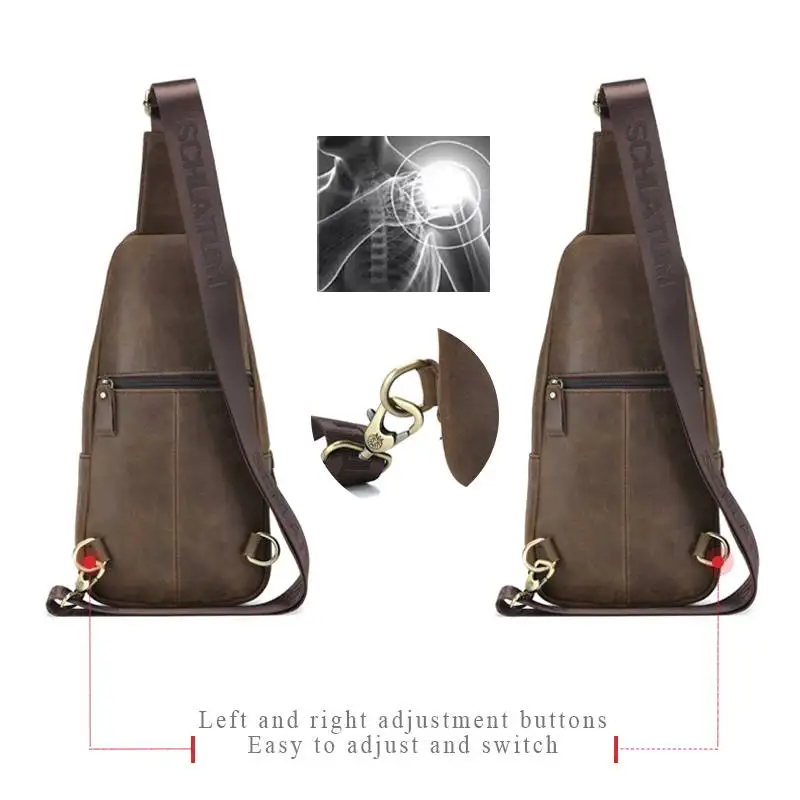
Frequently Asked Questions About Leather Quality
Is genuine leather good quality?
Despite its name suggesting authenticity and quality, “genuine leather” typically indicates a lower grade of leather. It’s real leather, but usually made from the hide layers remaining after the top and split layers have been removed. It’s less durable than full grain or top grain and often heavily processed.
What is the difference between top grain and full grain leather?
Full grain leather preserves the entire top layer of the hide with its natural surface intact. Top grain leather has had the very top surface sanded or buffed to remove imperfections, resulting in a more uniform appearance but slightly reduced strength and character development.
How long does full grain leather last?
With proper care, full grain leather products commonly last 20-30 years or more. Many items become family heirlooms, with some high-quality full grain leather goods lasting generations.
Does full grain leather scratch easily?
Full grain leather can show scratches initially, but minor scratches typically blend into the developing patina over time, becoming part of the leather’s character. The material also has self-healing properties when properly conditioned.
Can different leather grades be repaired similarly?
No. Full grain and top grain leathers can often be restored and repaired effectively, while lower grades like genuine and bonded leather typically cannot be satisfactorily repaired once damaged or worn through their surface coatings.
Is “Italian leather” automatically full grain?
No. “Italian leather” refers to the country of production rather than a specific grade. While Italy has a reputation for high-quality leatherworking, Italian leather can be any grade from full grain to genuine.
How do vegetable-tanned and chrome-tanned full grain compare?
Both are full grain, but vegetable-tanned leather uses natural tannins from plants and takes longer to produce (often 30-60 days). It develops a richer patina but requires more maintenance. Chrome-tanned leather uses chromium salts for faster production (1-2 days), offers more water resistance, and comes in more colors, but typically develops less character over time.
For comprehensive information about selecting the right leather quality, our quality leather backpacks guide offers valuable insights. Our leather laptop backpack collection demonstrates how leather quality affects functional bags.
The Summit Carry Difference: Our Commitment to Premium Leather
At Summit Carry, we believe in creating leather goods that don’t just serve a function but improve with every use. Our commitment to leather quality begins with rigorous material selection standards that prioritize full grain leather for its exceptional durability and character-developing properties.
Our artisans approach leatherworking with a balance of time-honored techniques and modern design sensibilities. We embrace the natural characteristics of premium leather rather than trying to conceal them, knowing that these features contribute to each product’s uniqueness and story.
The benefits of our quality-first approach become increasingly apparent over time. While mass-produced alternatives may deteriorate after a few years of use, Summit Carry backpacks develop a rich patina that reflects your personal journey—becoming more distinguished and personalized with each adventure.
Our preference for natural tanning processes not only creates superior leather quality but also reflects our environmental values. Quality products that last for decades rather than seasons represent a more sustainable approach to consumption.
Explore how we balance vintage and modern leather backpack features in our designs, or browse our men’s leather travel backpack collection to experience the Summit Carry difference firsthand.
